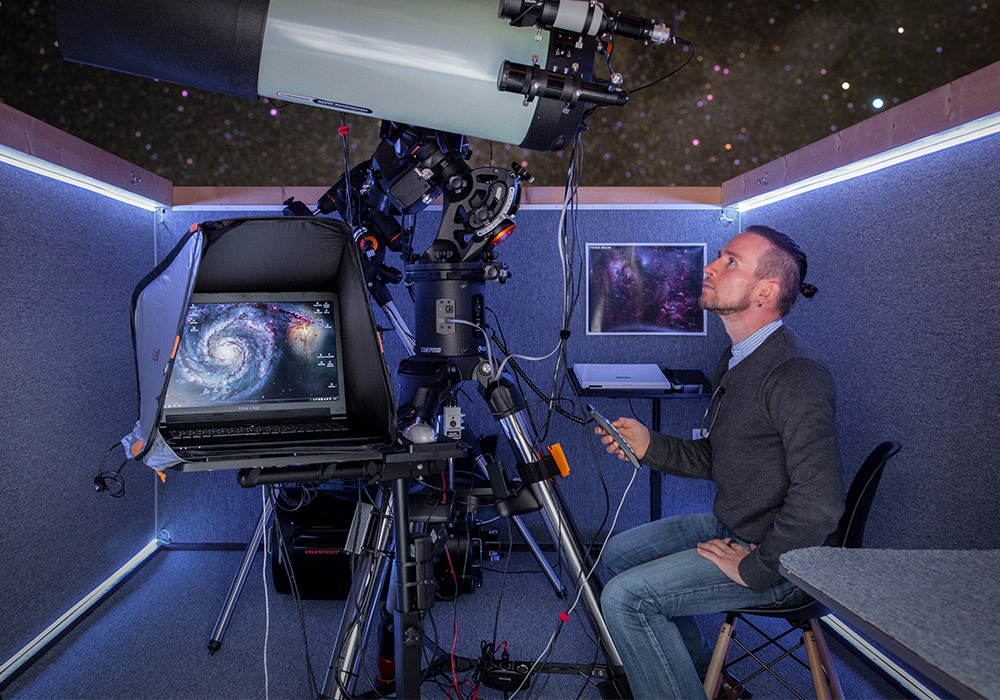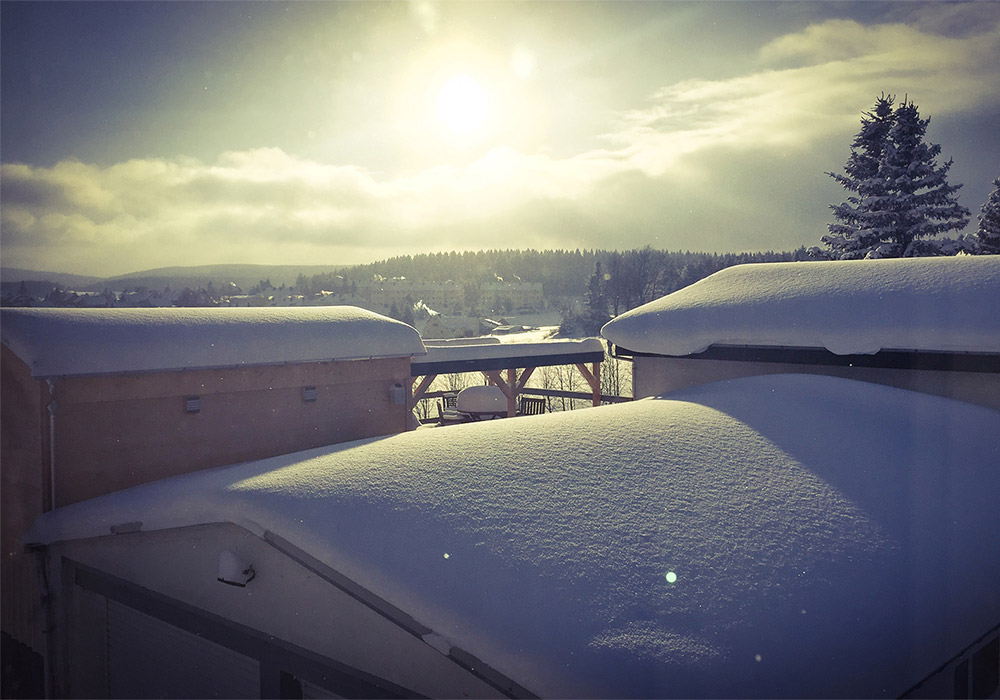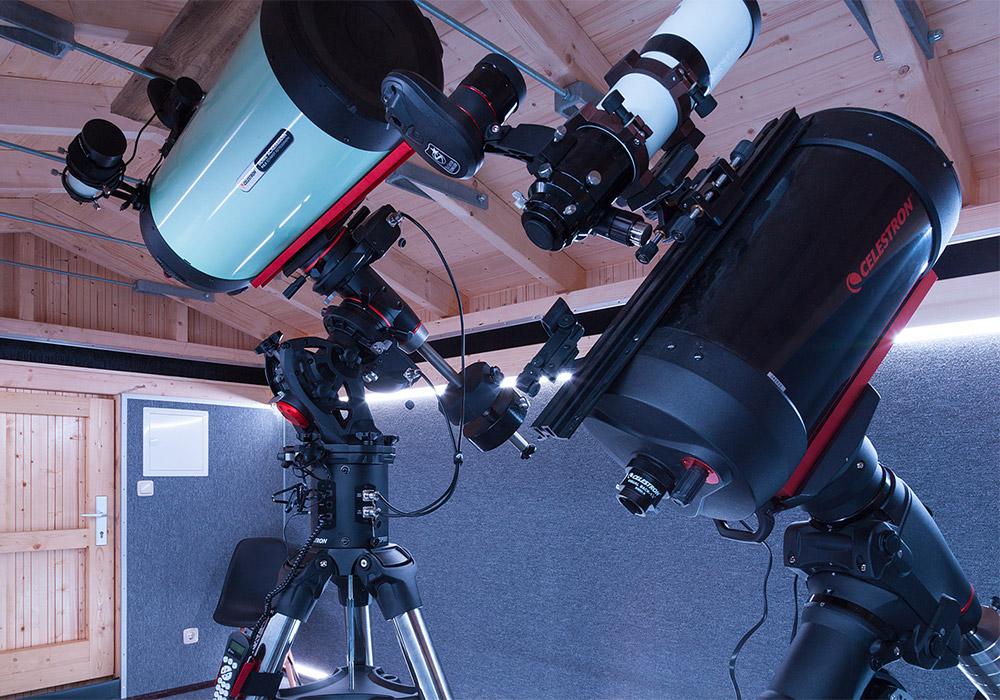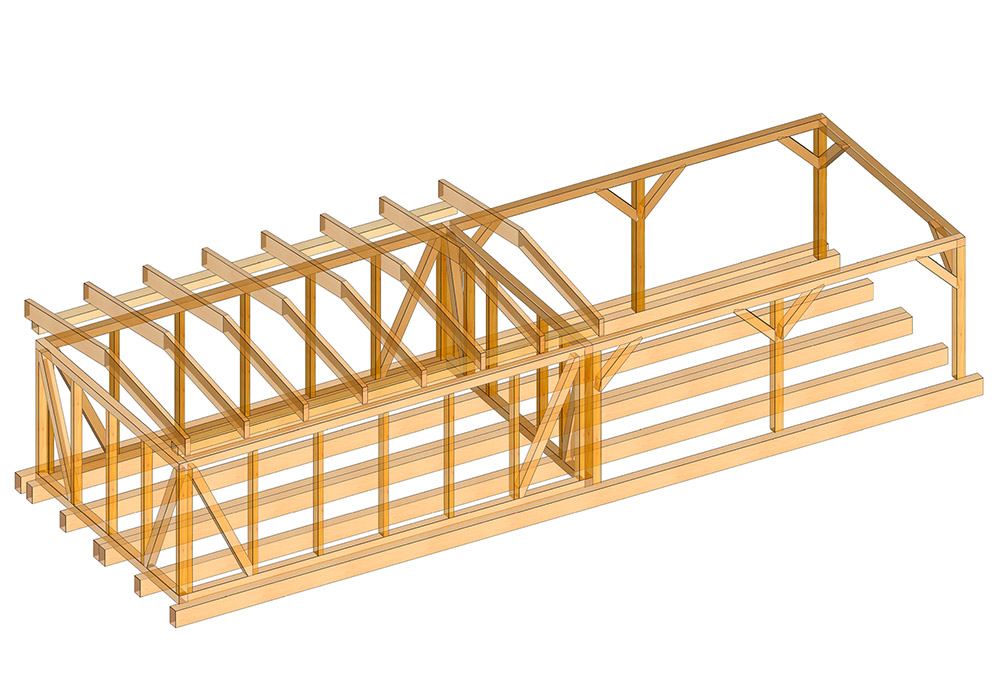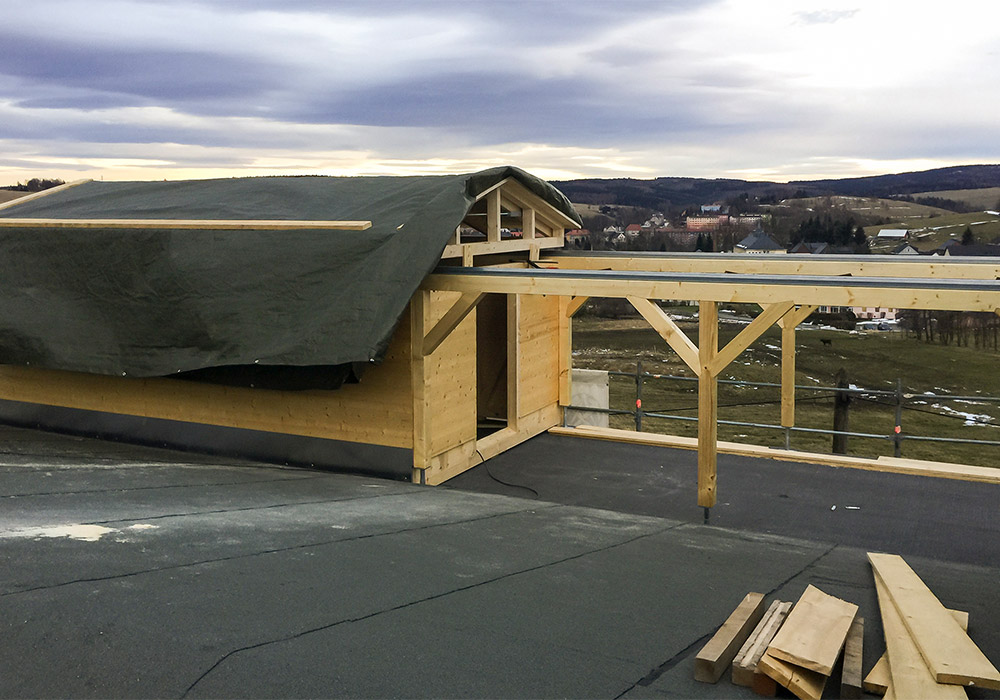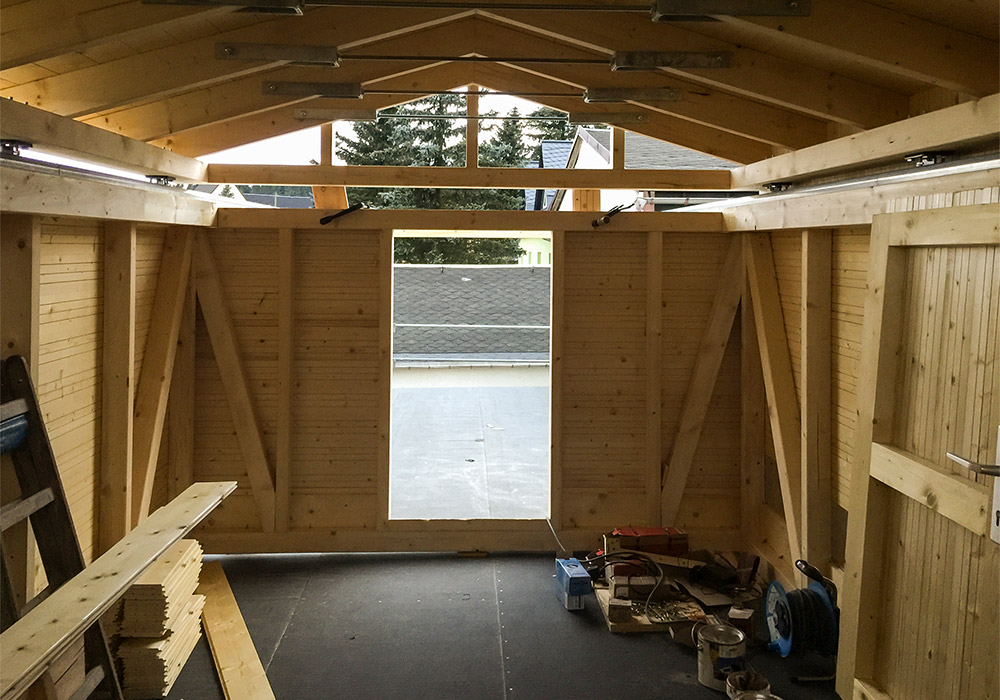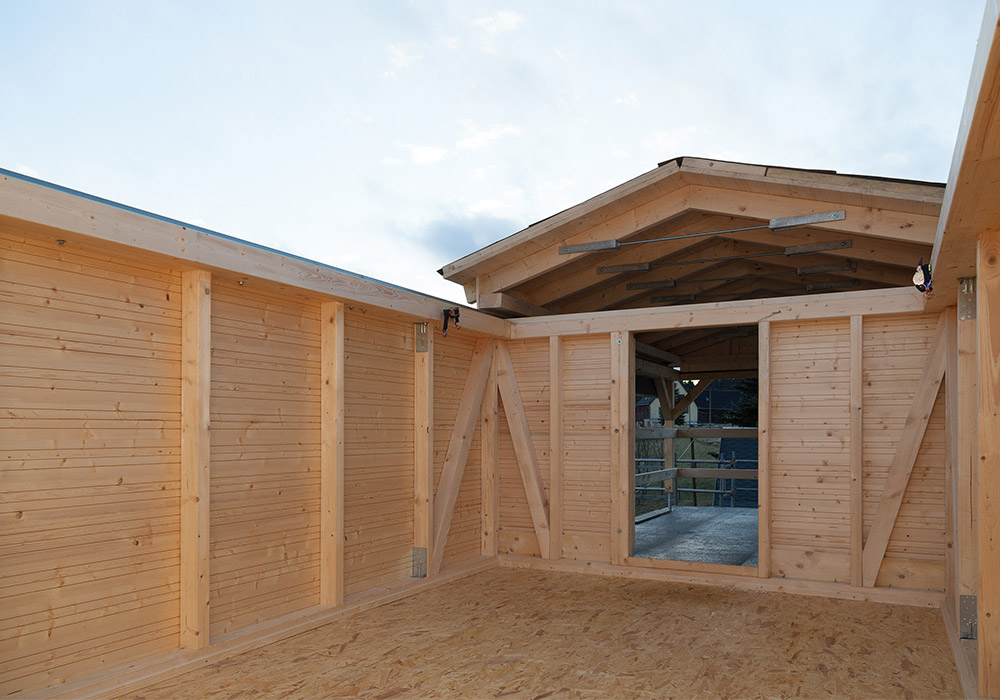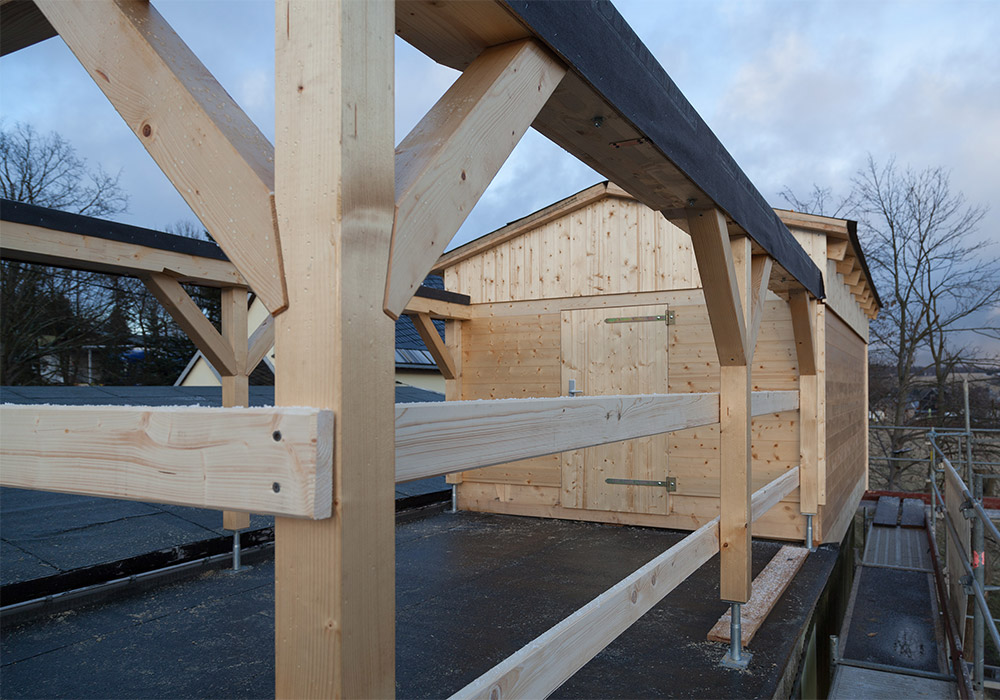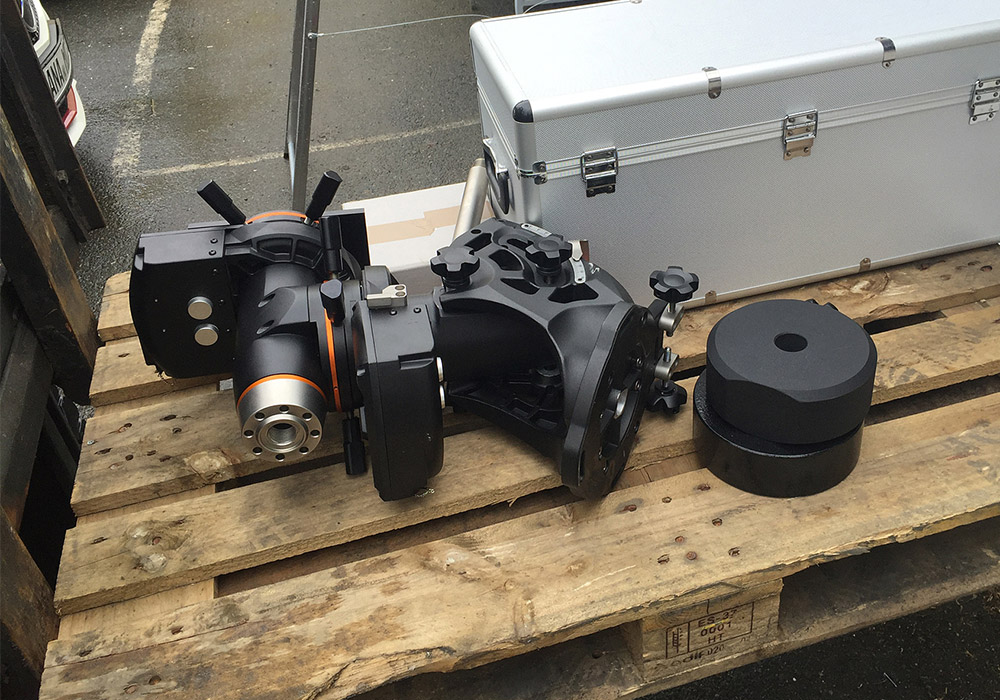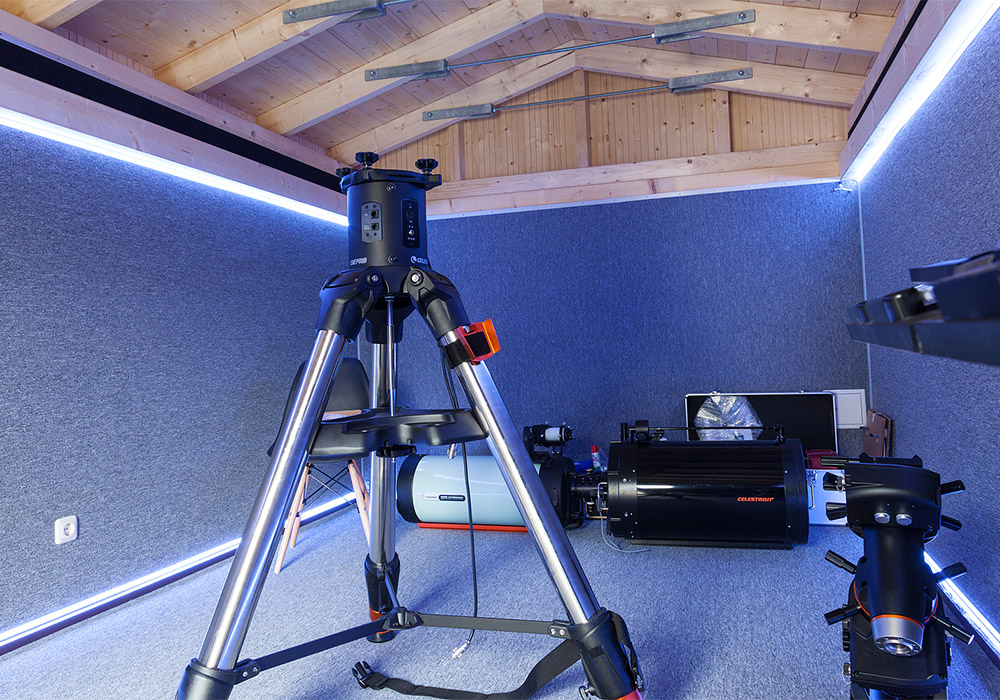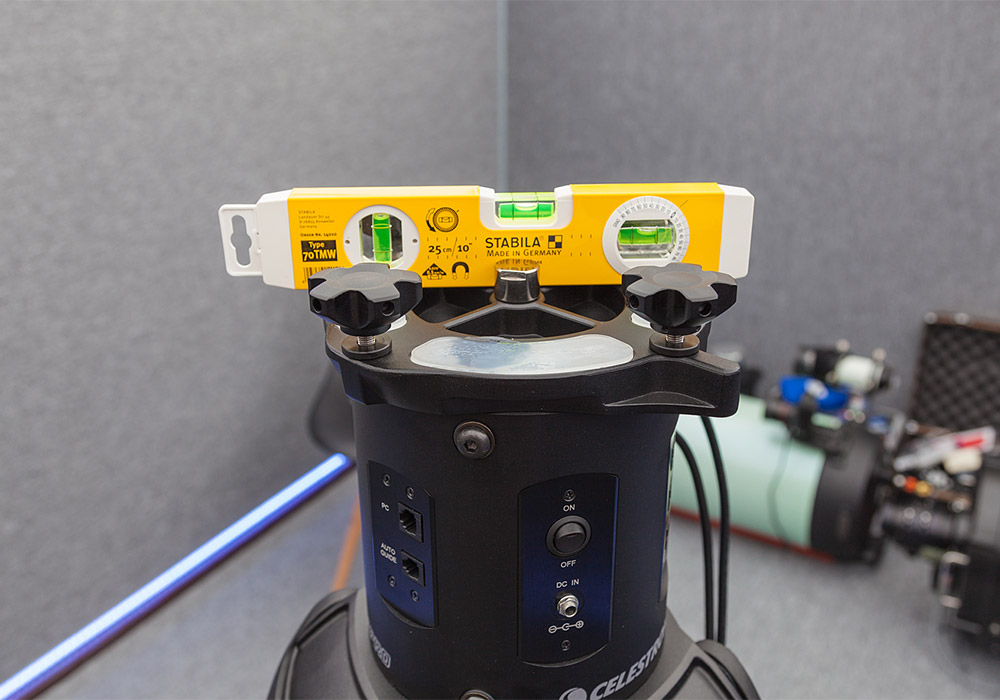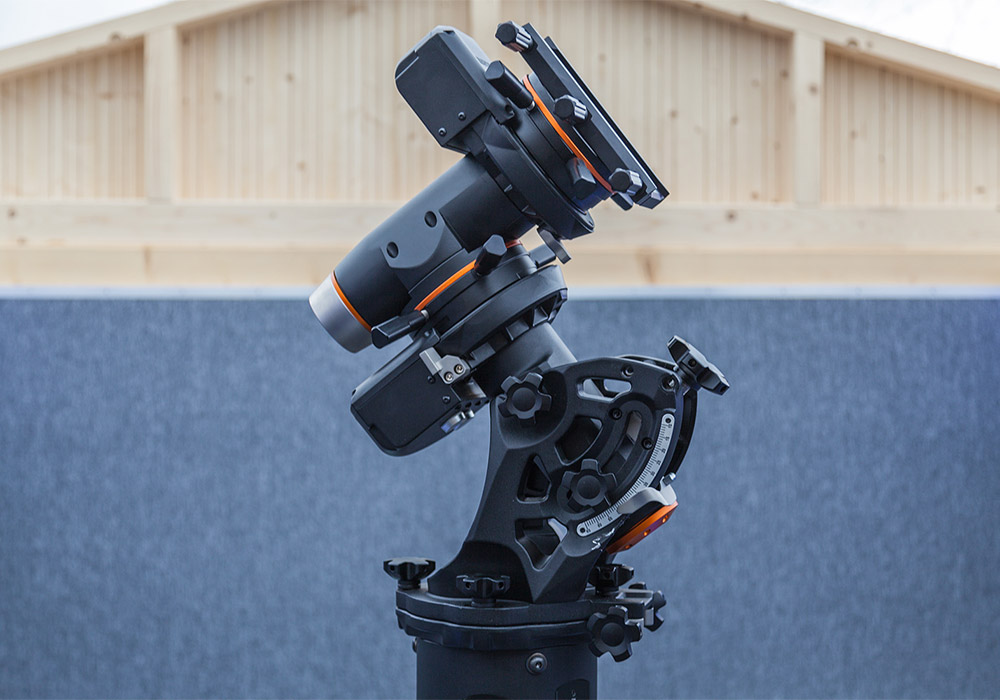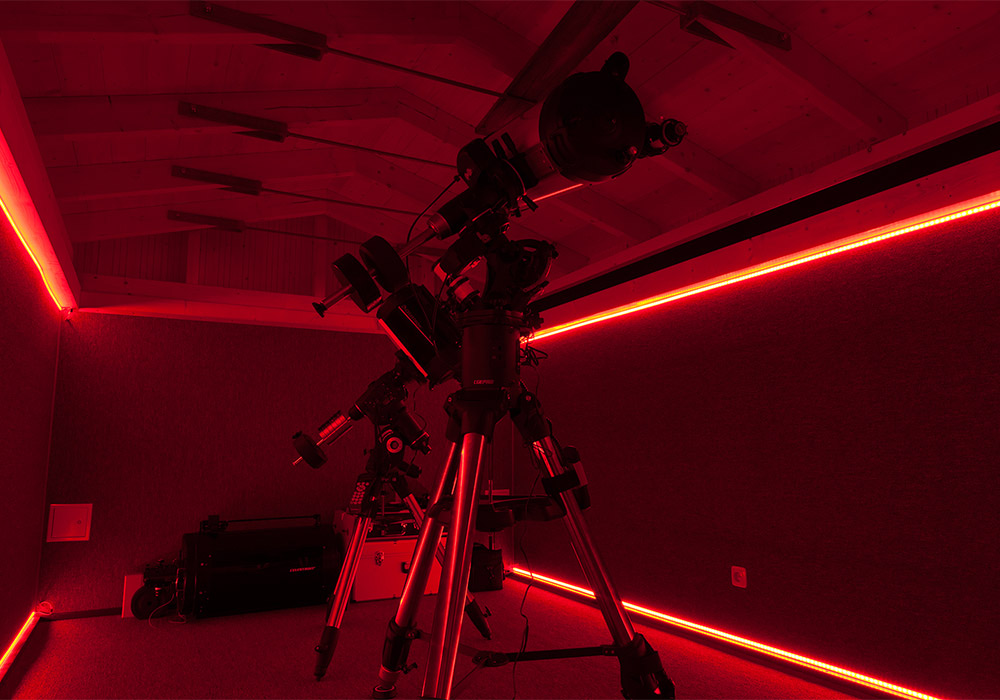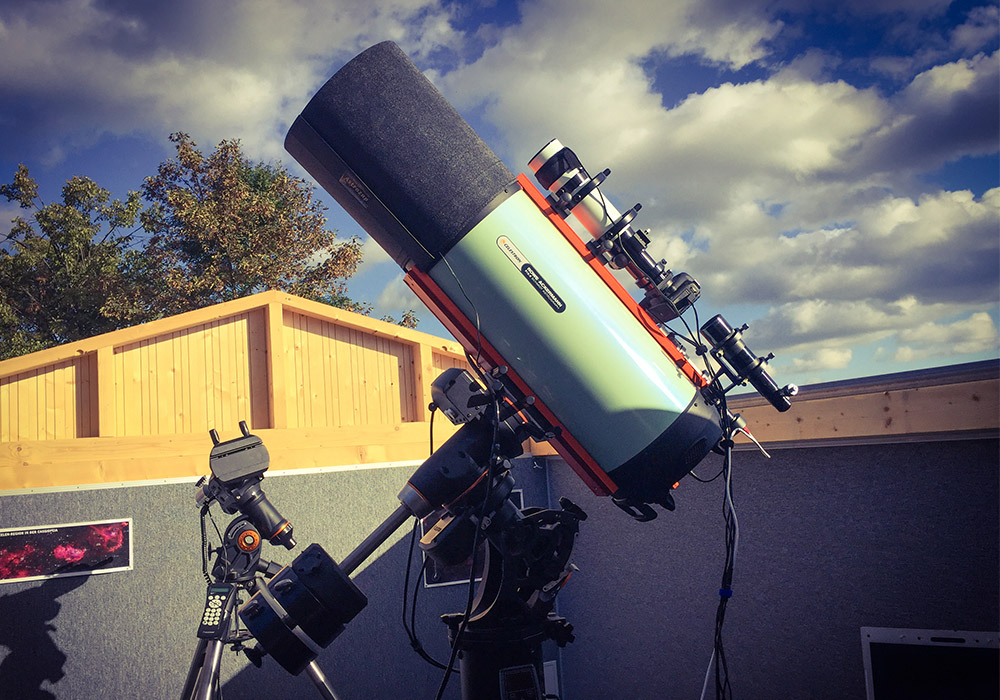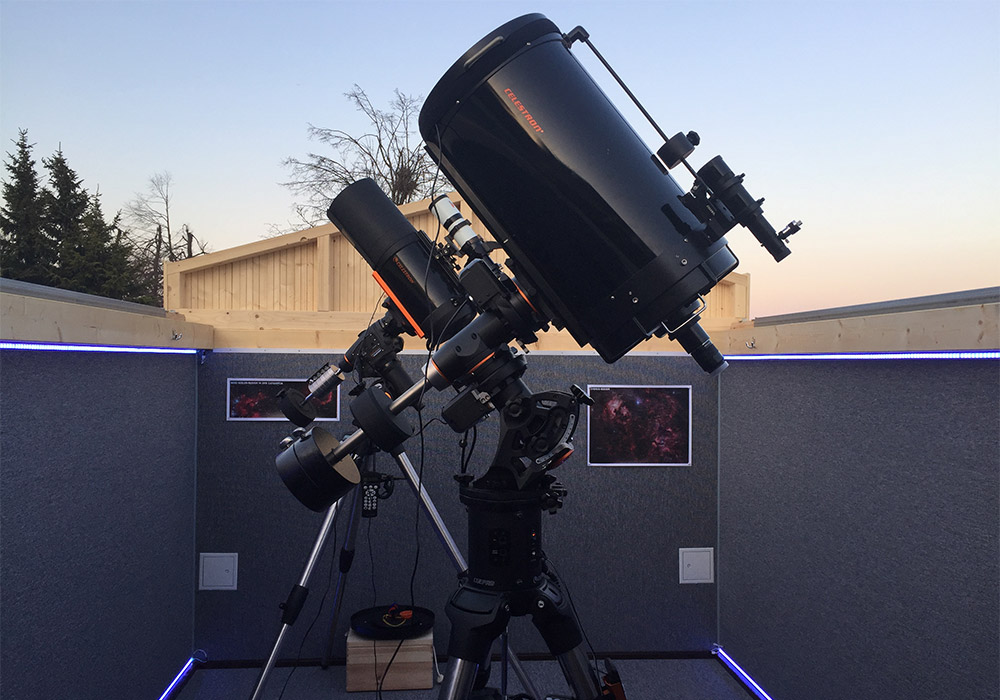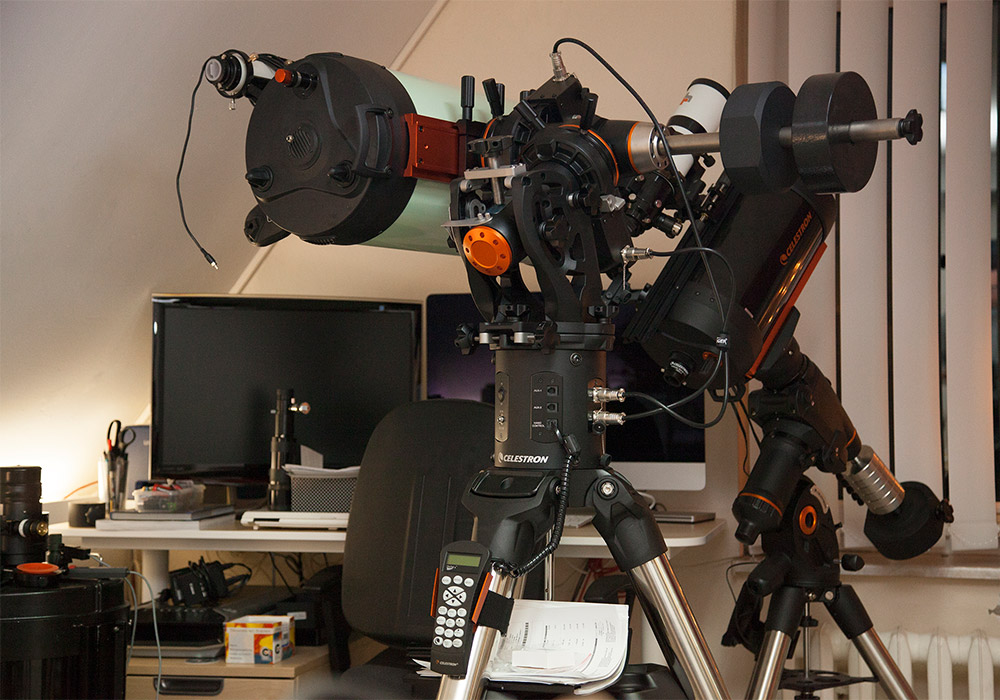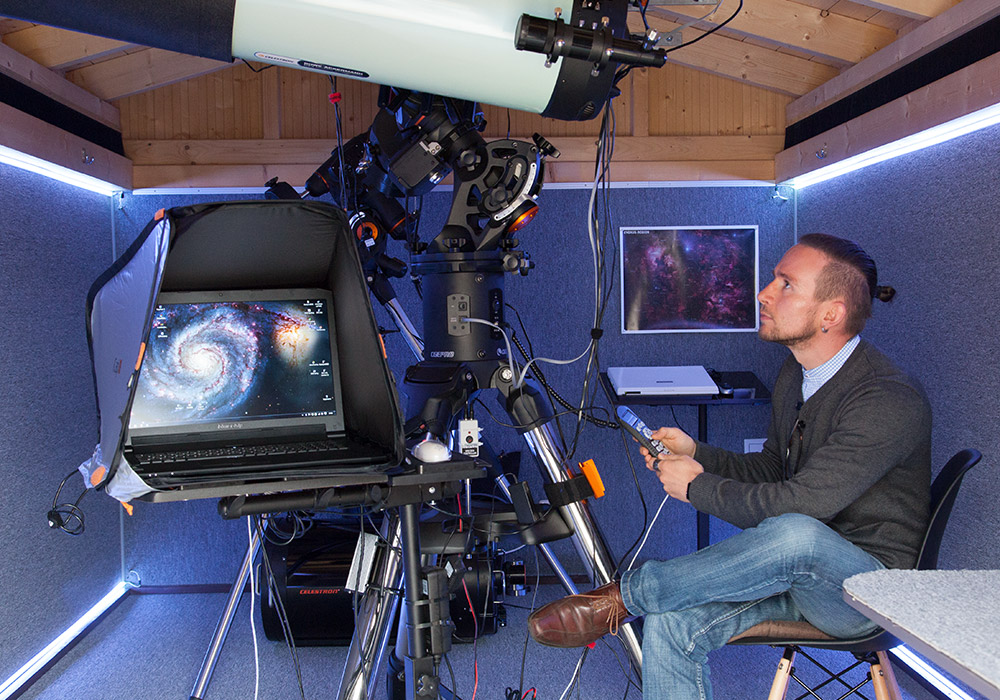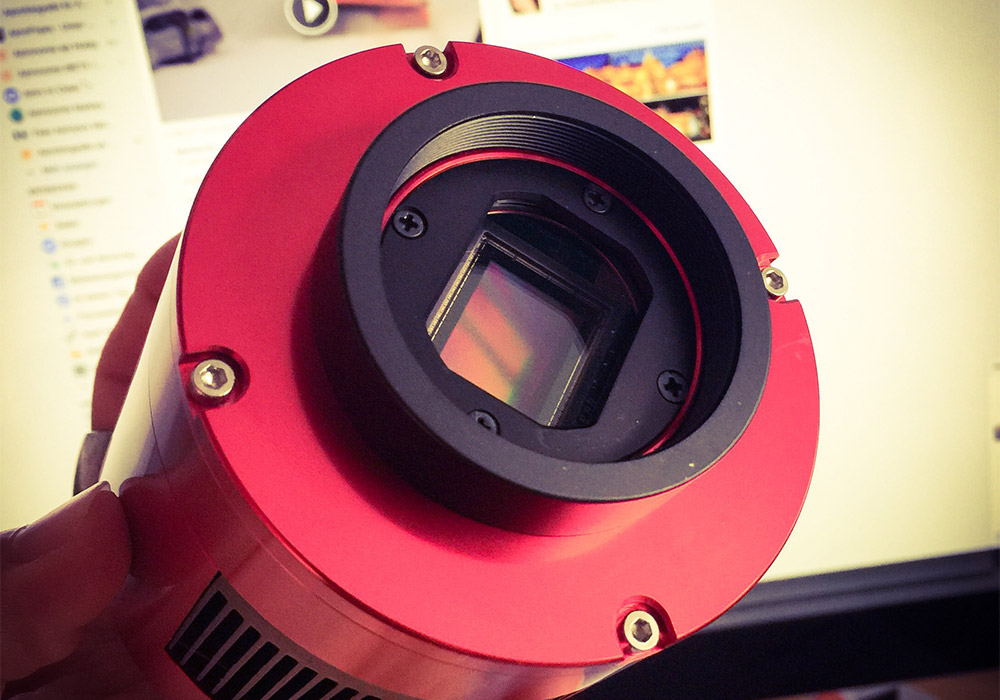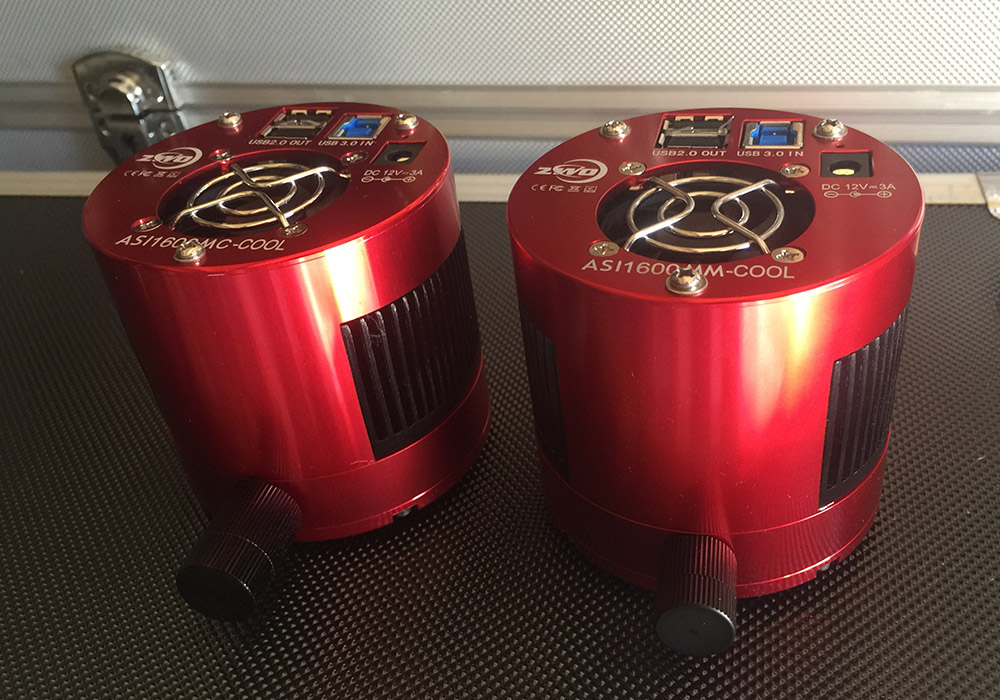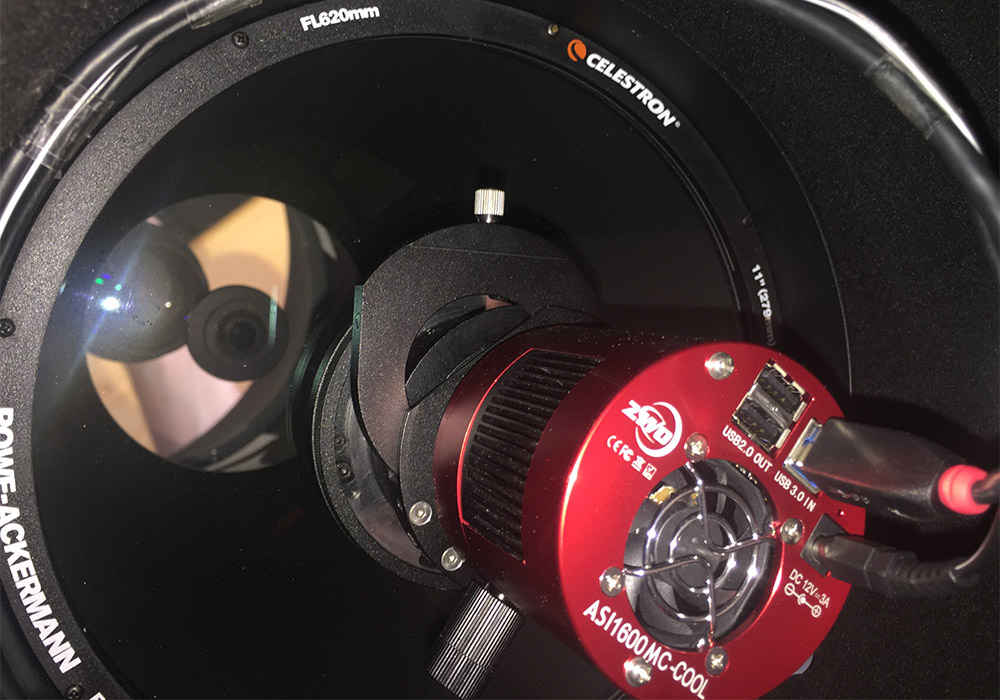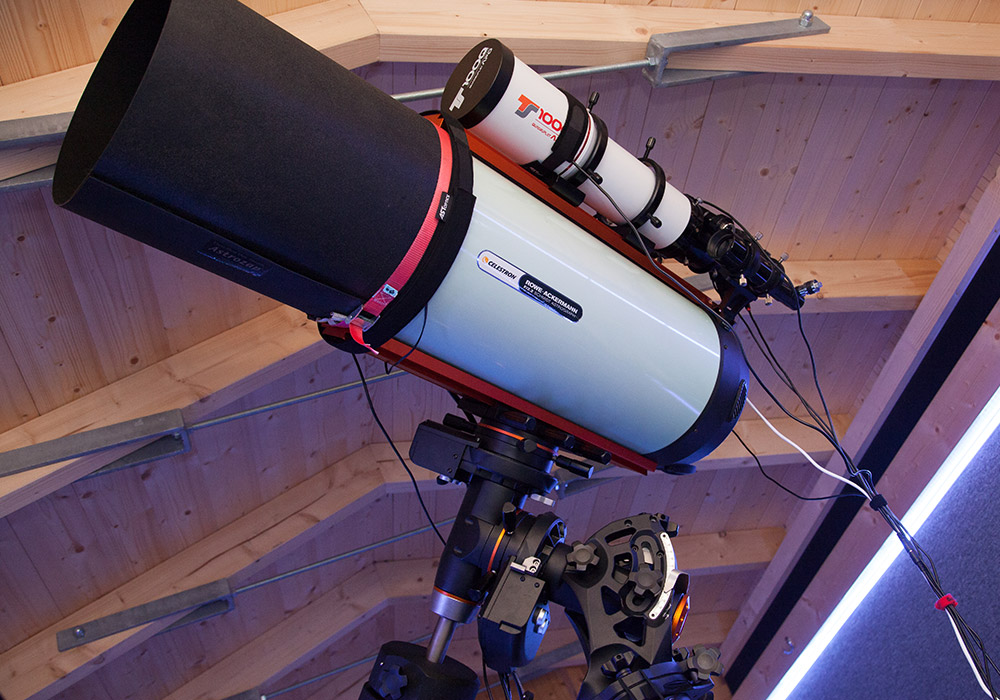Hello.
My name is Marcel and I am the face behind the Baerenstein Observatory. The aim of my images of galaxies, shining or dark nebulae and star clusters is to unite science and art in an aesthetically appealing picture.
the observatory
With the construction of the 15 square metre observatory in 2015, a long-cherished dream came true. Gone were the days when I had to drive my equipment into nature at sometimes icy temperatures to find a dark spot with a 360 degree panoramic view for my shots. An observatory makes the work process much easier, because the time-consuming setting up of the technology is no longer necessary and I can fully dedicate myself to the recording. The planning and the realization of the observatory was of course a feat of strength, but it was worth it for me.
The construction
Each project is preceded by a lengthy planning time. All parts of an observatory have to interlock perfectly like in a transmission, so that everything functions smoothly. From the choice of the perfect location, to the rolling roof, the right equipment, to computer and security technology. Misplanning leads to frustration during long recording nights.
the Equipment
Currently, the observatory is mainly equipped for astrophotography. Observation evenings do not take place. The two main optics are a powerful 11" Schmidt-Camera Celestron RASA, 620mm focal length at F2.2), which I use for most of my shots. For smaller cosmic objects a large 14" Schmidt Cassegrain reflector telescope is available (Celestron C14 with native 3900mm focal length).
2 equatorial mounts from Celestron (CGEpro and CGEM) with a payload capacity of 40 and 20kg are available.
Many cameras came and went over time. Currently I use a cooled mono CMOS astro camera from ZWO Optical (ASI1600mmc, 16MP) in combination with Baader filters for narrowband recordings (high-speed F2 filters H-alpha, OIII and SII, RGB filters, luminance filters and a filter for near infrared) for the main recordings.
The complete technology is conveniently controlled via data line from a nearby office. All image data generated during the nights are stored on the observatory server. The data can be easily accessed from any office computer. Numerous backups make data loss virtually impossible.
prints?
Photos can be purchased as licensed files or printed.
Marcel Drechsler - Graphic Designer
Feldstraße 17, D-09471 Baerenstein
+49 (0) 162 26 98 640
© Marcel Drechsler, all rights reserved
Baerenstein observatory
prints?
Photos can be purchased as licensed files or printed.
No self-service shop
Please note that all images on these pages are protected by copyright. Use of the photos without prior permission, not even for editorial purposes, is not permitted.
